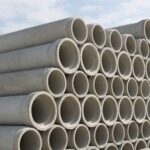You’re trying to keep your business running, but in the winter, you can’t concentrate when cold drafts keep blowing down your neck. In the summer, heat pours down through the ceiling no matter how high you turn up the air conditioning. And your business spends way too much on heating and cooling.
Maybe you should consider installing insulation. While this process costs money, some options are both effective and inexpensive.
Read on to learn which type of insulation might be right for your small business.
Blanket Batts and Rolls
Fiberglass blanket batts and rolls, one of the most common types of insulation, are typically used to fill gaps between wall studs or attic rafters in new construction. They can also be installed in attics or accessible spaces in existing buildings.
Batts usually contain fiberglass, thin strands made from molten glass. Some contain cellulose made from recycled paper and cardboard, while others contain cotton or sheep’s wool (all treated with flame retardant and insect repellent.)
If you’re constructing a new office building on a budget, you may want to choose this type of inexpensive insulation.
Click here – Should You Repaint Your Car or Get a Car Wrap? Pros and Cons Compared
Foam Board
Foam board, similar to the material used to make Styrofoam, provides good insulation despite being thinner than batts. Apply foam board to the interior or exterior walls, or cut it into customized pieces to cover gaps or insulate spaces between roof rafters. After installing the foam board, cover it with sheetrock or another covering.
Blown-in Insulation
Blown-in insulation contains small particles made of fiberglass, rock wool, or cellulose. These loose particles can be used to fill attics or existing hard-to-reach spaces. Choose this type of insulation when you need to insulate your existing office building on a budget.
Spray Foam
Spray foam insulation types include closed-cell and open-cell foam used to fill existing spaces. Closed-cell insulation, the more expensive option, contains sealed bubbles of gas, which help the foam expand to fill spaces, and has a high R-value. Open-cell foam insulation, a less expensive option, contains air bubbles, making it spongy and also susceptible to water damage.
You can get additional energy savings for a relatively inexpensive amount by insulating cracks and gaps with spray foam. Apply spray foam around light fixtures, between cracks, or around door and window frames to keep warm air from escaping into cold spaces.
Click here – Tara Sutaria Age, Height, Wiki, Father, Boyfriend, Movies
Reflective or Radiant Barrier
A reflective or radiant barrier reflects heat away from a building. It contains a reflecting material, which can look like aluminum foil, placed over a base material similar to kraft paper. Install reflective material in the attics of office buildings located in warm climates to keep heat from entering your workspace.
Insulating Blankets
If you need to insulate individual pieces of equipment inside your office, consider ordering an insulating blanket. Read on here to learn how blankets can be constructed to fit objects such as pumps, valves, and steam traps.
Choose Your Type of Insulation
Different insulation products have their advantages depending on whether you’re building or retrofitting and how much you want to spend. Whatever type of insulation you choose, you’ll make your office a more comfortable place to work and end up saving money.
If you enjoyed reading this, check out our blog for more articles on business and home improvement.






